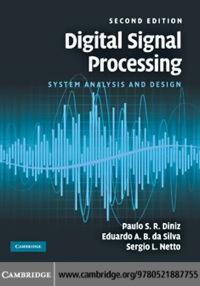In the conversion of a discrete-time signal to a continuous-time signal, the practical D/A converters, instead of
Question:
In the conversion of a discrete-time signal to a continuous-time signal, the practical D/A converters, instead of generating impulses at the output, generate a series of pulses \(g(t)\) described by
\[\begin{equation*}x_{\mathrm{p}}(t)=\sum_{n=-\infty}^{\infty} x(n) g(t-n T) \tag{1.243}\end{equation*}\]
where \(x(n)=x_{\mathrm{a}}(n T)\). For example, in the sample-and-hold operation, which is shown in Figure 1.15, the train of impulses has been replaced by a train of pulses. Assume now that the function \(g(t)\) is
\[g(t)=\left\{\begin{array}{ll}\frac{T-|t|}{T}, & -T \leq t \leq T \\0, & \text { otherwise }\end{array} .\right.\]
For the above choice of pulse \(g(t)\) :
(a) Determine how could the effect of this interpolation be represented in the time domain (see Figure 1.15)?

(b) Determine an expression for the Fourier transform of \(x_{\mathrm{p}}(t)\) in Equation (1.243) as a function of the Fourier transform of \(x_{\mathrm{a}}(t)\).
(c) Determine the frequency response of an ideal lowpass filter that outputs \(x_{\mathrm{a}}(t)\) when \(x_{\mathrm{p}}(t)\) is applied to its input.
Step by Step Answer:

Digital Signal Processing System Analysis And Design
ISBN: 9780521887755
2nd Edition
Authors: Paulo S. R. Diniz, Eduardo A. B. Da Silva , Sergio L. Netto





